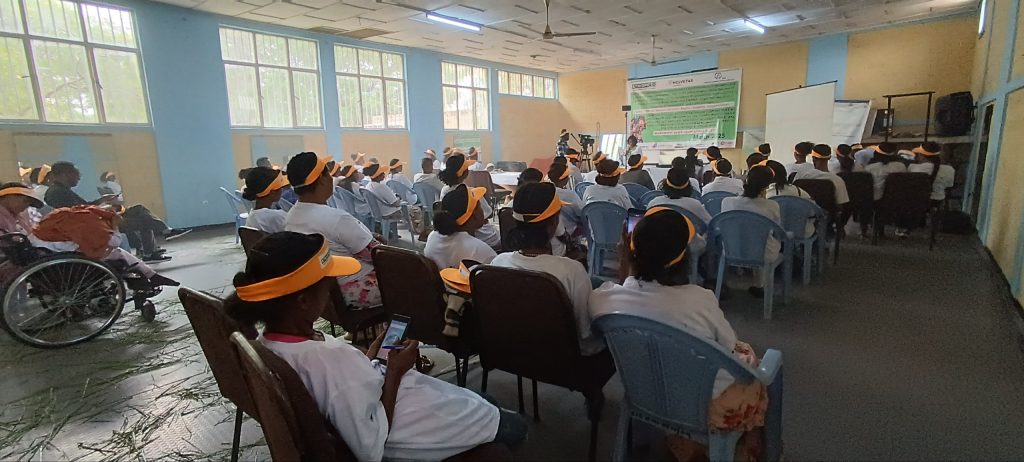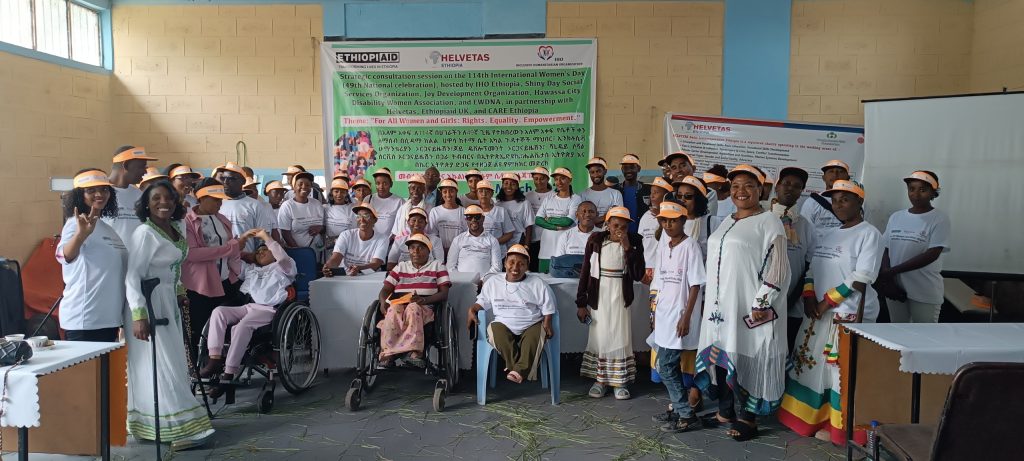
The Institute of Domestic Violence, Religion & Migration is the outcome of the pioneering Project dldl/ድልድል that was set up to promote a substantively decolonial approach to domestic violence responses and to promote two-way knowledge exchange between Africa and Europe.
One of Project dldl/ድልድል’s major outputs was the docudrama Tidar (Marriage), an open access multilingual film co-produced in Ethiopia and the UK by an all-Ethiopian crew to raise awareness about domestic violence and help-seeking in religious rural communities. The film was directed by Yidnekachew Shumete Desalegn and produced by Max Conil and Hermon Hailay under the executive directorship of Dr Romina Istratii, who wrote the script based on long-term anthropological research in Ethiopia.
The film was subsequently disseminated to humanitarian actors and development organisations in East Africa to be used as an awareness-raising tool on the ground. In recent months, the Inclusive Humanitarian Organization (IHO), an Ethiopian indigenous organisation that works to support people with disabilities and vulnerable groups in society, has integrated the film’s screening in its regular community engagement activities.
IHO came across the film through the Protection from Sexual Exploitation and Abuse (PSEA) Network in Ethiopia, which circulated the film as a resource to their network members. IHO then proceeded to organise a first screening, involving over 30 married women and mothers to watch and to discuss the film. The screening was attended by a representatives from UNFPA and the PSEA Network in Ethiopia and the Women and Social Affairs Bureau in the sub-district.
By incorporating the film in its community engagement activities, IHO sought to contribute to the prevention of physical and sexual violence against women in Ethiopia by creating a space for:
- Religious leaders and clergy to examine their own situation or level of teaching in terms of sexual violence and to recognise their own (positive or negative) impact;
- Human rights activists, social and health service providers and institutions to continue to strengthen the measures they are taking against violence against women and to examine their practices;
- Women in the community to reflect if they are silently experiencing or witnessing physical and sexual domestic violence against other women in the community and to find confidence to mobilise against it;
- Men in the community to take responsibility for domestic violence and sexual violence in the home and assess their own role and actions;
- Legislators, legal interpreters and law enforcement staff to become more aware about the current situation of violence against women and to reflect on their own responses.
The impressions shared by the participants about the film were overall positive. Seeing the realities of domestic violence depicted in the film led many participants to express frustration and anger that the problem continued in their communities. Some women in the audience confided that they themselves had experienced abuse and had been divorced for this reason. All the participants called for the film to be presented to other women in their communities as a wake-up call.
The participants also shared several suggestions for improving the film’s effectiveness in mobilising women and communities against domestic violence. One idea expressed was that the lead actress could have been depicted to find a solution for herself in order to portray better female empowerment. While the audience found it acceptable that the husband’s conscience was weighted down by his abusive actions by the end of the movie, a suggestion was made that he could have been punished through legal action. Participants also suggested that the impact of domestic violence on children could have been more explicitly shown in the film. Lastly, they shared numerous recommendations for a more integrated response in the community on the basis of the film’s research-based insights:
- They proposed that if the services provided by the nurse had been coordinated with legal and social service professionals, that is to say, if the services had been provided under a single window system, any woman affected by domestic violence would have been encouraged to make use of legal and medical services in an integrated manner.
- Participants also proposed that religious institutions should develop guidelines and policies for clergy to follow when responding to women’s issue and domestic violence so as to achieve consistency and avoid variable responses that may be unhelpful as shown in the film.
The Director of IHO, Mr Tsehaynew Ademe, shared photos and highlights from the screening that were taken with participants’ consent, which are reproduced below (not to be reproduced without permission).


